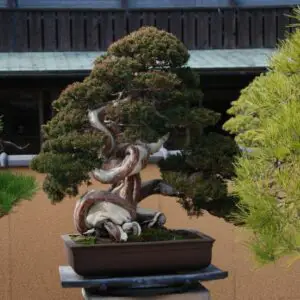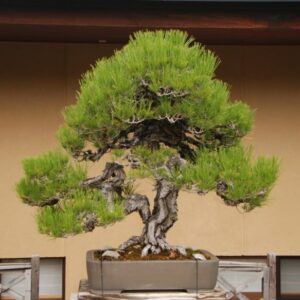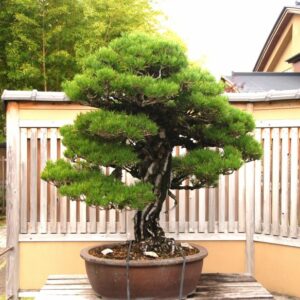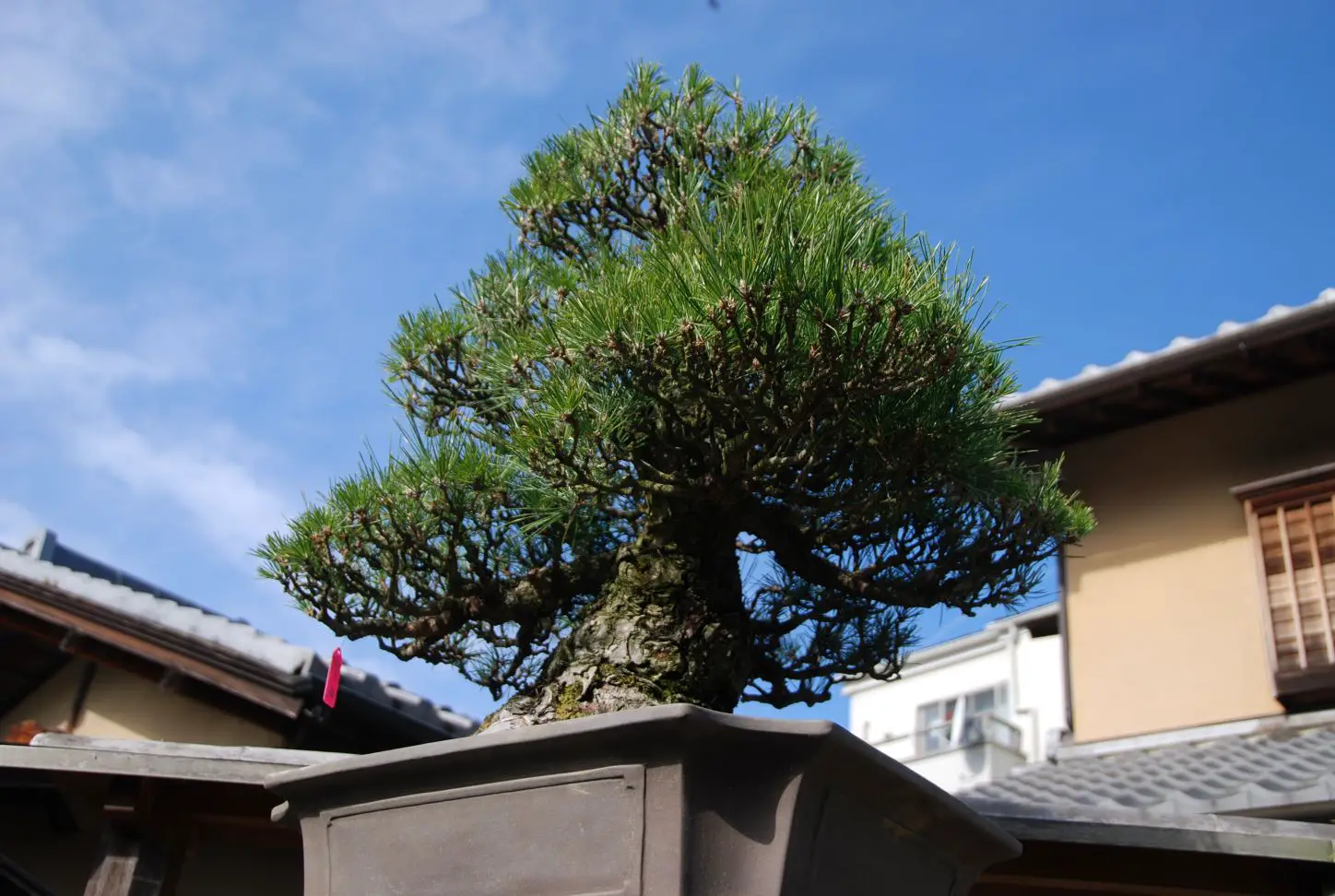Signs of a root-bound bonsai include stunted growth, yellowing leaves, visible roots, less visible soil, and elevated tree. You can tell root-bound by checking the roots and tree for the signs or by teasing the tree to see if it is attached to the pot.
What is root-bound bonsai and why does it happen?

What is root-bound bonsai?
Bonsai trees that have been growing in the same pot for a certain amount of time may become root-bound or pot-bound, where roots have grown into a dense, tangled mass that allows little or no space for further growth. The roots would totally fill the container and often grow to circle around the inside of the pot.
This is a problem for bonsai trees because their ability to absorb water and nutrients is actually limited by long and compacted roots; a larger amount of roots does not mean more water and nutrients are taken in.
This may be surprising to you but most water and nutrients are only absorbed through root hairs near the very tip of the roots and not through the entirety of the roots. And those tips of the roots have to have some space to do their work.
So, root-bound trees are more likely to suffer from water stress as the compacted roots cannot take up water effectively. They may also show signs of stunted growth, yellowing leaves, and reduced flowering or fruiting because they cannot absorb enough nutrients either.
Why does root-bound happen?
By far, the most common cause of root-bound bonsai trees is growing in the same pot for too long without being repotted.
Other root-bound causes include:
- the pot is too small for the tree’s root system; and,
- the tree is young and growing vigorously.
Signs and symptoms of root-bound bonsai

There are visible signs on the soil and roots as well as symptoms on the plant which can help you determine if your tree is root-bound without removing it from its pot.
Sings on the soil
Slow drainage/ dry soil
If water drains too slowly or if there is stagnant water left on top of the soil, it may be a sign that the soil is too compacted and the roots are blocking the drainage holes.
Root-bound may manifest as dry soil as well. If water flows out from the top of the pot and does not seem to be absorbed, it could indicate that the roots have become tightly packed and are not allowing water to penetrate the soil.
Less visible soil
If the soil looks more sparse and less visible than before, it may be a sign of root bound. The roots may have taken up most of the space in the container, leaving less room for soil.
Elevated soil
If your bonsai tree looks more elevated or lifted above the surface of the soil than before, it may be a sign of root bound. When the roots have become so tightly packed that they have nowhere else to go, sometimes roots exert pressure on the surrounding soil and cause the soil to heave upwards.
Please note that this can also be caused by frost or freeze-thaw cycles in winter and may not always be a sign of a root-bound tree.
Signs on the roots
Visible roots
If you see a large number of roots growing on the surface of the soil, it may be a sign that your tree has outgrown its current container.
Note that roots coming out of the drainage holes do not necessarily mean a sign of root bound for bonsai trees because bonsai pots are very shallow and the roots may come out of the bottom of the pot before they are root bound.
Symptoms on the trees
Symptoms of root-bound trees include:
- stunted growth,
- wilting, and
- yellowing leaves.
A root-bound bonsai tree may show little to no growth, and the leaves may be smaller than normal. It may wilt easily even when it is watered and fed with fertilizers. Yellowing and dropping leaves may also occur as the tree is unable to get enough nutrients from the soil.
Please be careful; these symptoms can be caused by a variety of factors other than root-bound, including overwatering or underwatering, nutrient deficiencies or excesses, pest or disease infestations, extreme temperatures, and the shock of pruning.
How to tell root-bound bonsai

There are a few ways to tell if your bonsai tree is root-bound without pulling your tree out of the pot.
Observe and look for signs and symptoms
Familiarize yourself with the signs and symptoms of root-bound bonsai and observe your tree well. If many of them do fit, your tree may be root-bound.
It is important to consider all possible factors and observe the tree’s overall health and environment to determine the cause of these symptoms. A single sign might mean something other than root-bound.
Press on the soil
If the soil is firm and does not give when you press on it, it may be a sign that the roots are tightly packed and the tree is root-bound.
Tease the tree
Very gently tease the tree to see if it is attached to the pot.
If the tree is clinging to the sides and bottom of the pot, it may be a sign that it is root-bound. Be careful if you wired your tree to the pot when you last repotted. In this case, the tree may not loosen up unless you cut the wire.
On the other hand, if the tree loosens up and comes out of the pot with all the soil, the pot is at least full of roots. If it does not loosen up easily, do not try hard to remove the tree from the pot unless you can repot it at the same time.
Keep in mind that teasing the tree too aggressively or frequently can damage the roots and stress the tree. It is important to be gentle and careful when handling it and not to do it often.
Also, taking the tree out of the pot is stressful to the tree, though it is the most accurate way to check for root-bound.
How to fix root-bound bonsai
The best and obvious way to fix root-bound bonsai is repotting. If it is early spring and before the buds sprout, you are good to repot your tree.
For a step-by-step guide to how to repot a bonsai tree, the following article might be helpful.
If it is summer or winter, it might not be a good idea to repot because the weather itself is stressful enough for the tree. If that is the case, you might be able to repot your tree in a bigger pot without root pruning until next spring comes. This enables the roots to have some space to grow.




